~~* The Singing Falls Stream Restoration Project *~~
 ϕ
ϕ
~~* The 2005-2006 Flood Event *~~
The following mpgs are large files of short duration but I thought they would be of great interest to individuals familiar with the Singing Falls heritage. The falls received their name from the ancient indigenous people group of this region. The western mind usually associates "singing" with melodious sounds accompanied with an array of musical instruments. But to the Native American singing had a very different expression. It usually was a community experience attended with percussion instruments of various kinds. The great pow wow with numerous dancing braves surrounded by ornately beaded eagle feathered chiefs attire is more what should come to mind. Please note that mpg two is the result of the camera held at the side angle. Mpg three is my feeble attempt to correct the video.
Another purpose for these movies is to illustrate the profound power that confronts the engineer who has the task of designing stone and log weirs that should stabilize conditions in stream during intense monsoon rains experienced here each winter.
| Joe Hall Bankfull mpg | Singing Falls mpg | Singing Falls mpg |

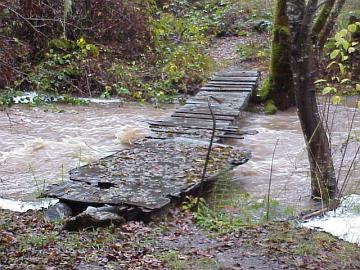
This foot bridge on Joe Hall creek spans the stream on my neighbor's property and is used when the stream is much more placid during the summer and early fall months. Plans are in the works to replace it with something more substantial and higher above the stream bank.
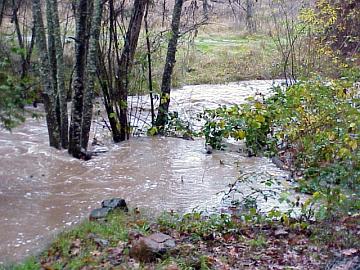
Alder trees act as tremendous sentinels of the stream. Their roots do a lot to prevent erosion and to capture silt and other nutrients along the stream. They are a short lived tree. Replanting along the stream is part of the project since foliage is the main provider of shade to keep the stream temperatures down for young fish health.
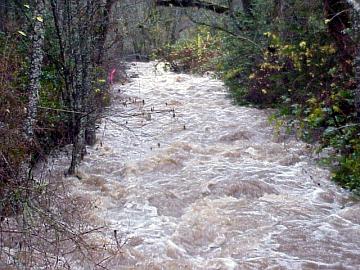
Because there is no woody debris the raging torrents of a rain event scour the stream, taking with it aggregates, small wood and other elements that make for a healthy riparian zone. Large wood from trees that once lined the stream have been logged away. The wood that once filled the instream bottom have long been absent. The gravel beds, refugia for aquatic life, and the benefit of slowing the water down so the land on each side of the stream can absorb water and slowly release it during the summer months is gone with it. This is pretty much a straight shot right to the ocean.
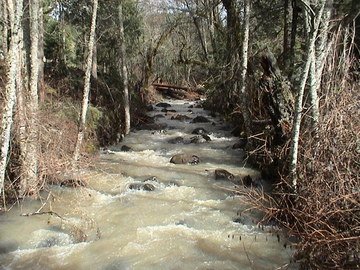
This is what the above spot looks like today after the stream restoration work has been done. I am really looking forward to seeing another flood event to document what the new flow conditions do with the enhancements to the stream. Go here to see the site page related to this location on the stream.
This particular stretch of the stream was embedded with large boulders. A careful look at the image to the left will show a substantial drop of large wood also. The boulders and large wood slow the stream down considerably, provide complexity to the stream and refuge for fish.
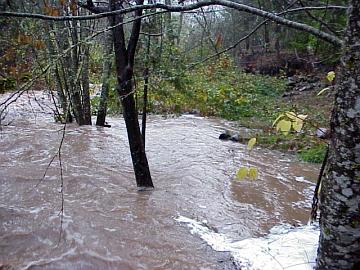
Bankfull December 2005
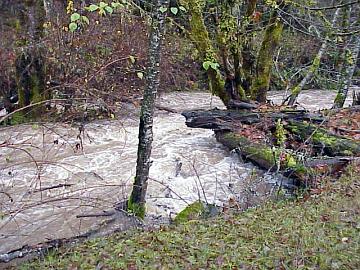
Wood deposits from the 1996 flood are evidence that the stream has been much higher. Still those remnants have been shelter for many living creatures over the years.
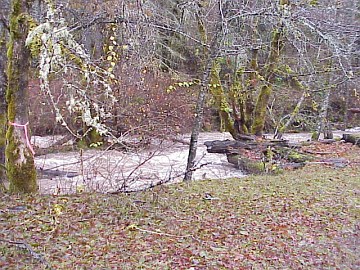
Bankfull December 2005. This high water stage illustrates that the stream is still not “connected” to the flood plane. Connectivity is critically important to stream and riparian area health.
stream index
top






